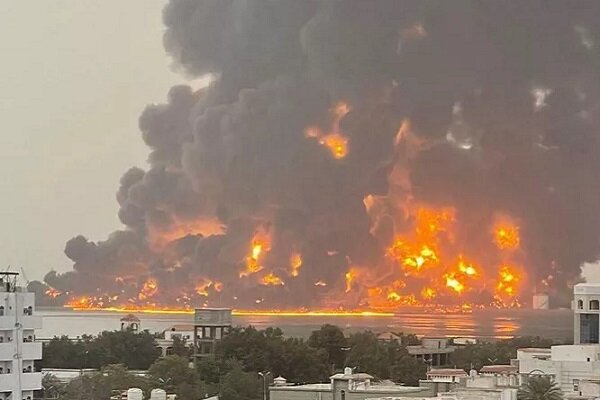US goals in the violation of Yemen; The power of the “Ansarullah” fire is still in place

International Group: In the final days of winter, US President Donald Trump began the official decree of attacks on one of the poorest countries in the world, Yemen. The air offensive began, with the new US president in the early days of his arrival in the White House, signing Ansarullah on the list of foreign terrorist groups in order to increase economic pressure on the Yemeni people. At the same time, suspicious movements in southern Yemen began to launch a new round of attacks against Sanaa, which was met with a rapid response from Yemen’s resistance.
Saudi Arabia and the United Arab Emirates, which failed to achieve all their demands on the Yemeni front after eight years of battle, pursued a policy of “economic pressure”. In response to this strategy, Ansarullah’s leader threatened that if the Arab countries want to target Yemen’s banking system and financial structure, it would also counter. In the following note, we will try to examine the direct military approach between the United States and Yemen, to analyze the causes and future of the invasion of Yemen.
Playing with “Fire” in Yemen
After issuing an attack on Yemen, the US Army released a bank of military, human and strategic targets from Yemen, which are in the country’s war machine. Jouff, Imran, Hadidah, Saada and Sanaa are among the major Yemeni cities that targeted the US war machine. On the other hand, the Yemenis also targeted the occupied territories and preventing the passage of Zionist ships, and in an unprecedented move, Harry Truman repeatedly attacked. In addition to advanced drones, the Palestine-Two and Zulfiqar missiles also played a key role in crossing enemy defense systems and targeting their interests. During the new round of clashes between Washington-Sanaa, Americans intend to confront Ansarullah by minimizing help from their regional-trans-regional allies.
Take a look at the policy of “Middle East First”
during the election campaign 1 America, Donald Trump, like his first round of presidency Especially the white middle class. Following the policy of dismissing illegal immigrants, rejecting the war and trying to establish a ceasefire, tightening the Mexican border, tension with members of the five -eye club, territorial claim to Greenland, and expanding the range of tariff warfare to Europe reflecting a new foreign policy -seeking foreign policy to increase its economic power. Today, US vessels, fighters and forces were deployed in the Indo -Asropic area to serve the “first Israel” policy!
In this policy, IPEC, Jay Street and Christian Union Lobbies were able to protect the new US government by pressing on congressional representatives, and ultimately governing the Republican chambers of the new US government by pressing on congressional representatives, and eventually to the new US government. In this view, it is constructed that it is not rooted in reality, if the United States wants to overcome Russia and China, there is no choice but to defeat the resistance and the creation of the “new Middle East” through the development of the Abraham Treaty. This military-security treaty will enter a new phase with the operation of the Indian-Middle East-Europe corridor and will change the face of the region. Today’s Yemen war and the Americans’ efforts to achieve some kind of end result in the region should be analyzed.
Yemen’s power and resistance axis for self-recover
Days of Destroyer in the area. The United States and the Zionist regime intend to change the West Asian region based on their priorities and interests after months of war and consecutive attacks. The axis of resistance, despite the loss of Syria and a group of prominent figures, still has a strong presence in Gaza, West Bank, Lebanon, Yemen, Iraq and Iran and can retrieve its past capability in the shortest time.
Talk interest
Despite Mike Waltz’s claim of US National Security Adviser to destroy a large part of the Yemeni resistance weapons infrastructure and military talents, there is still the strength of the group in the Red Sea and against the occupied territories and continues with its national-national mission. Some analysts believe that the US goal of this unilateral invasion is to represent power and at the same time reach a kind of ceasefire agreement with Ansarullah. The US president recently implicitly announced that the condition of stopping the attack on Yemen was the end of the Gaza’s defense operation by Ansarullah in the Red Sea.


